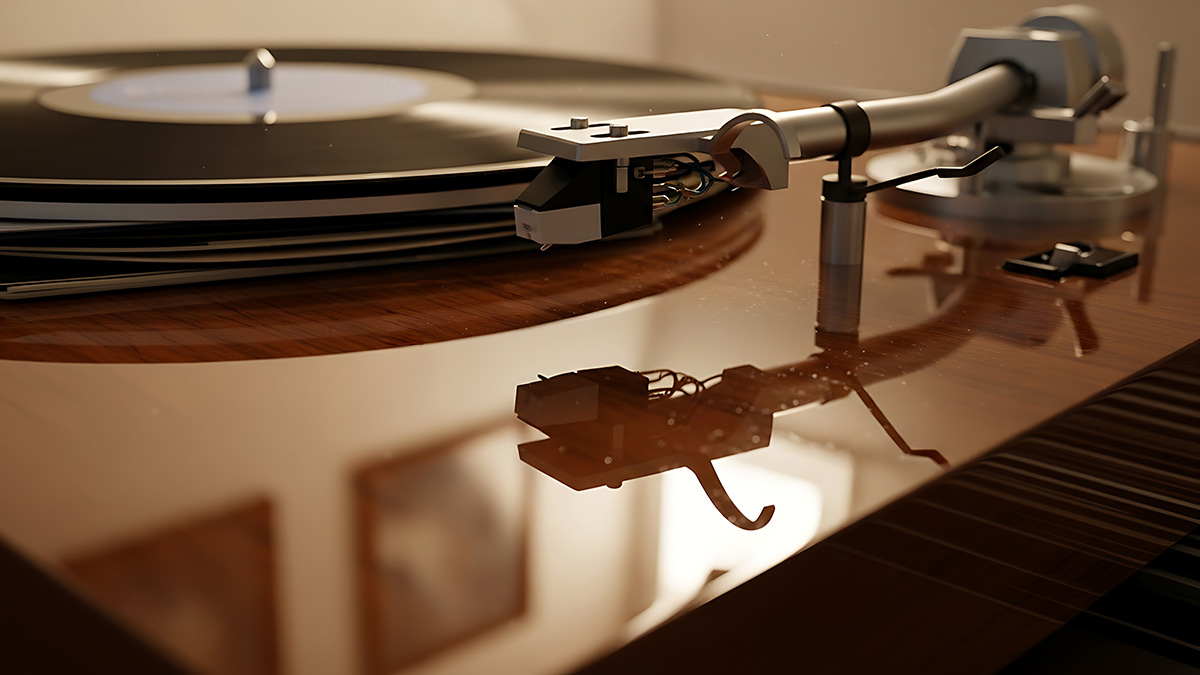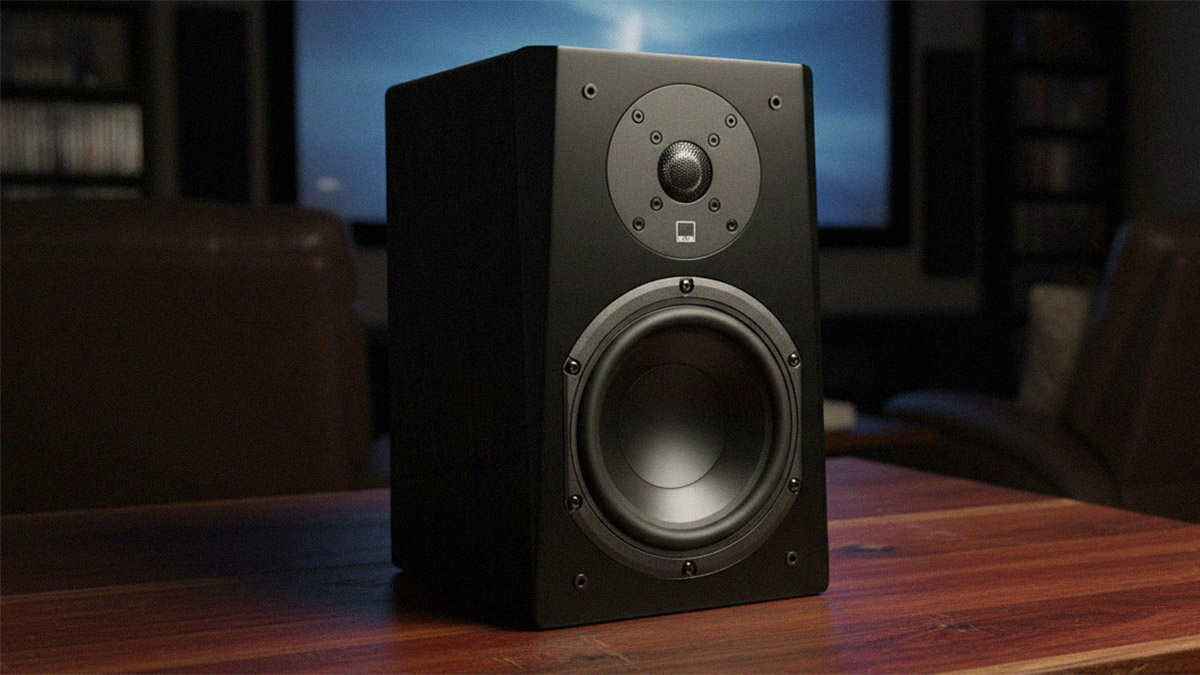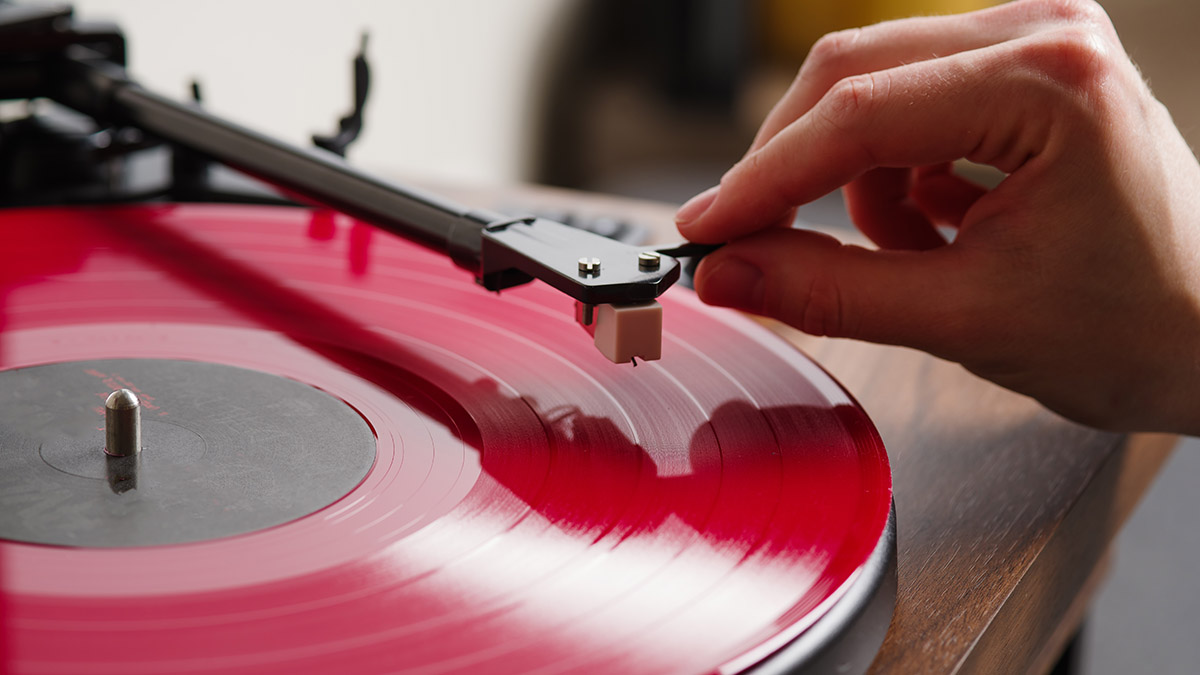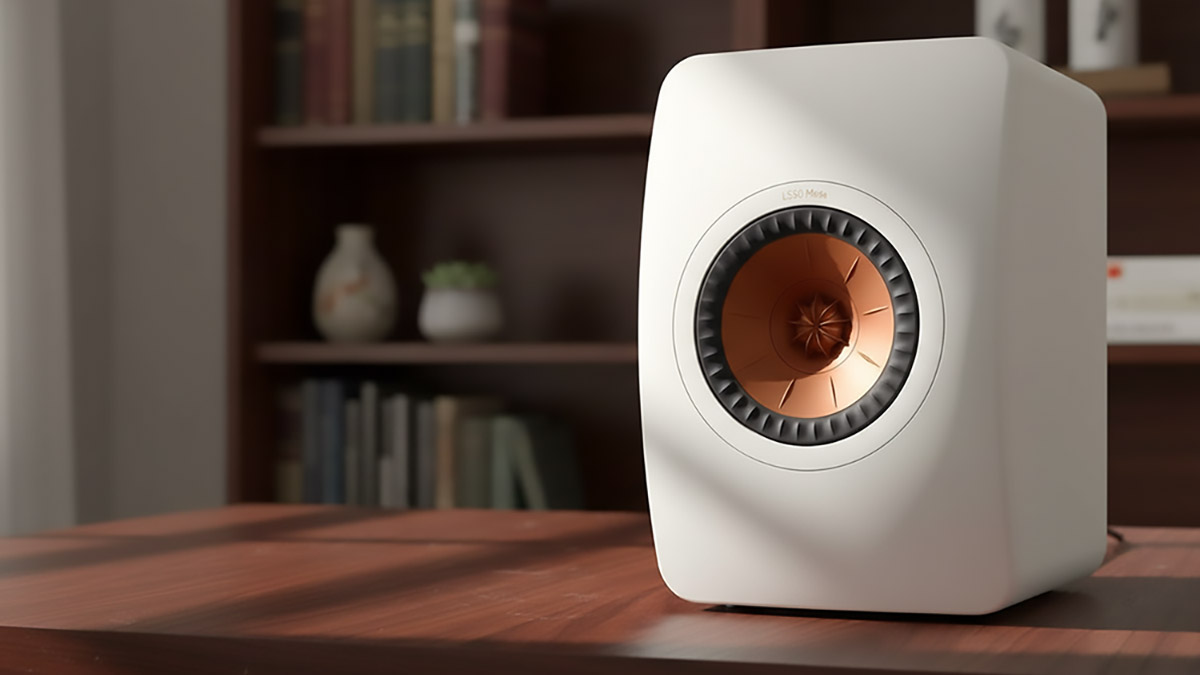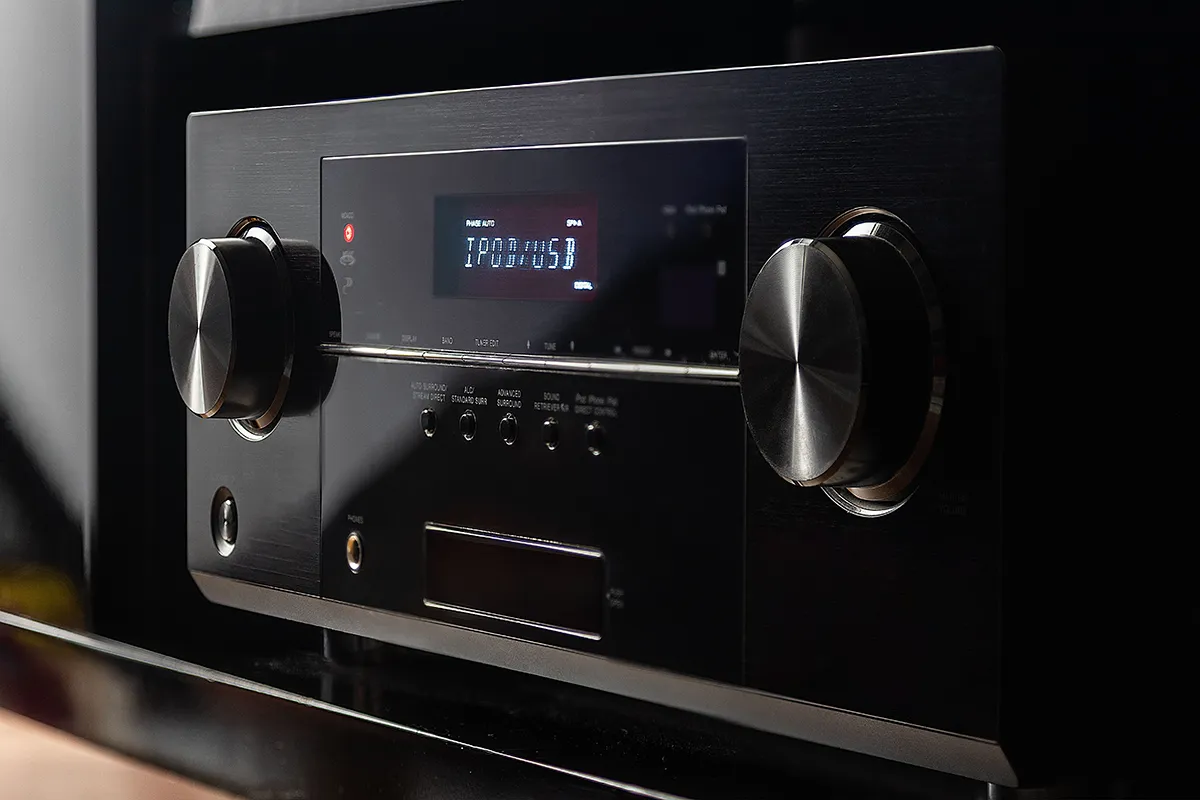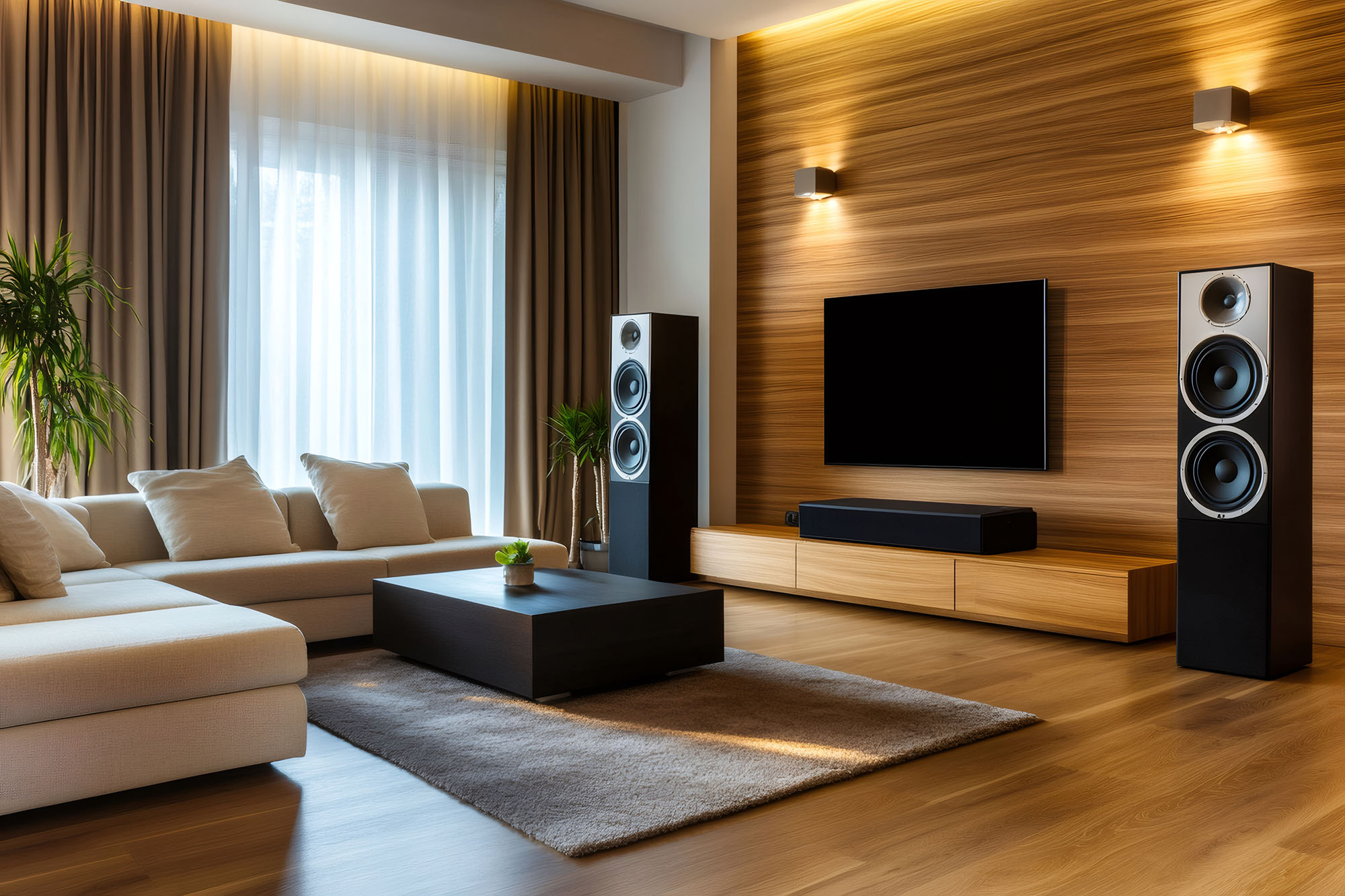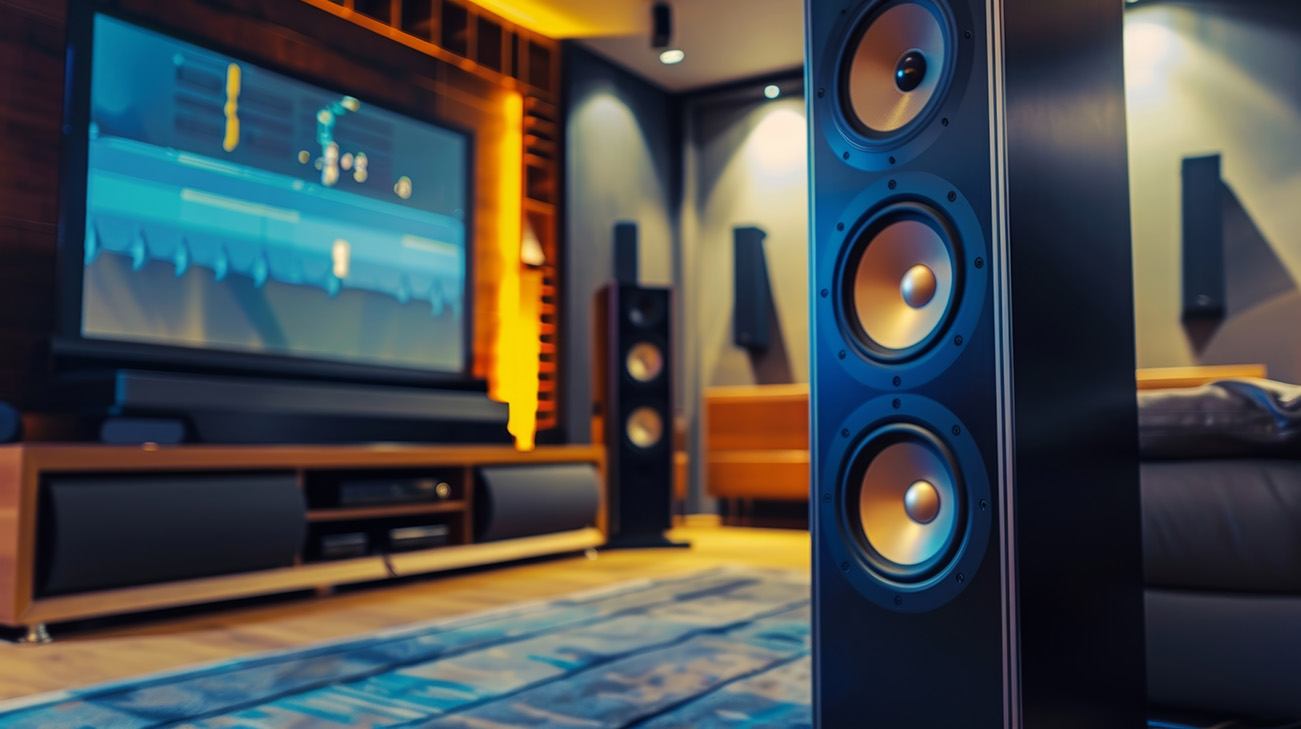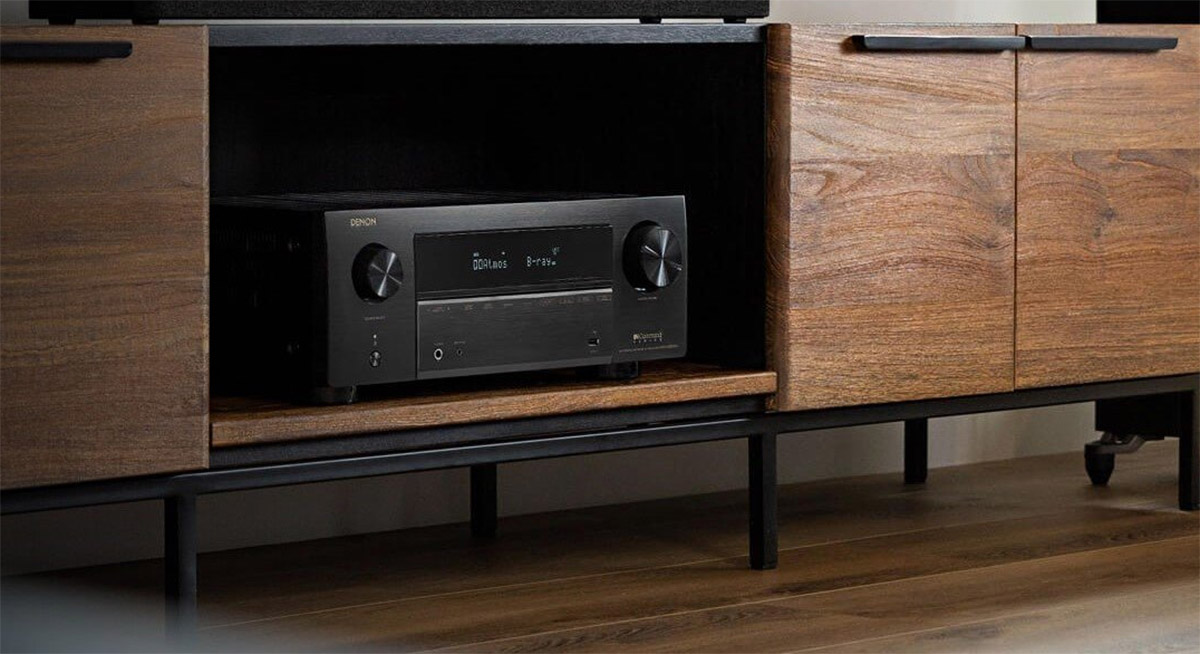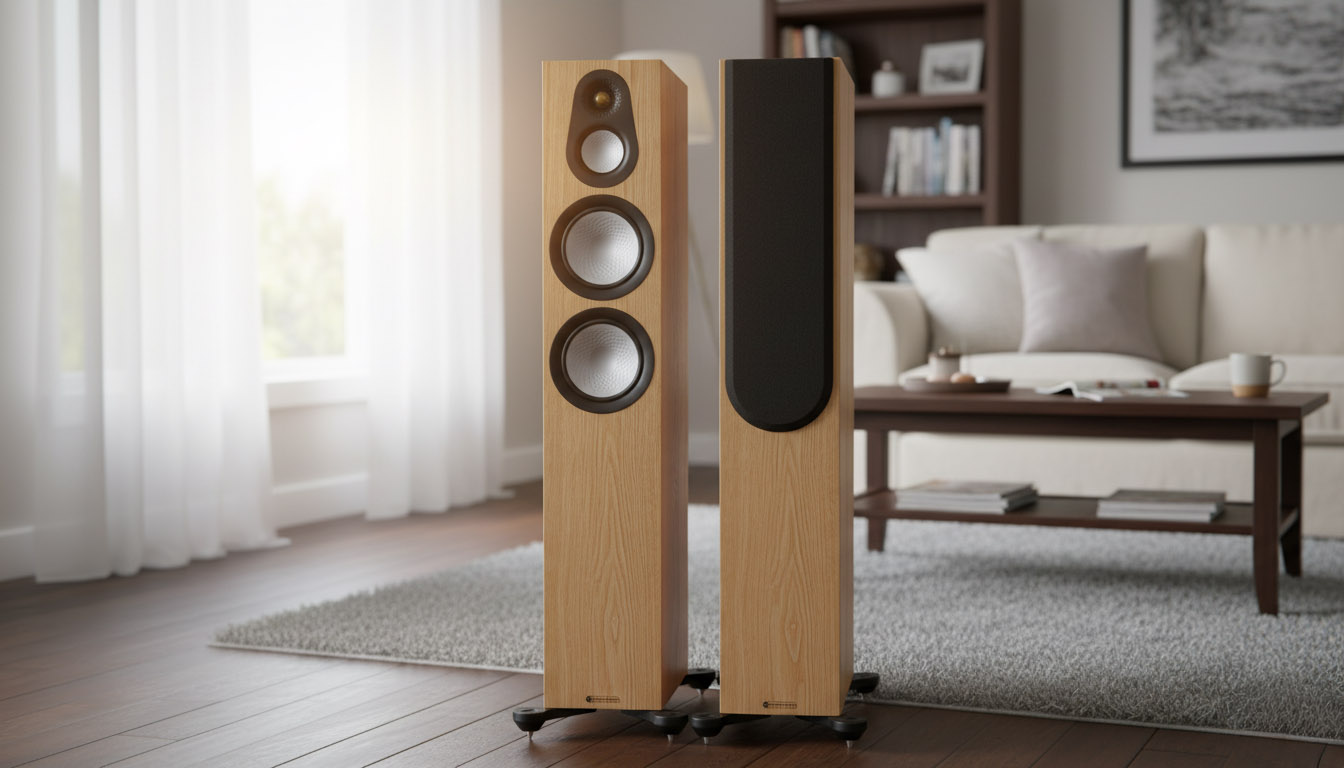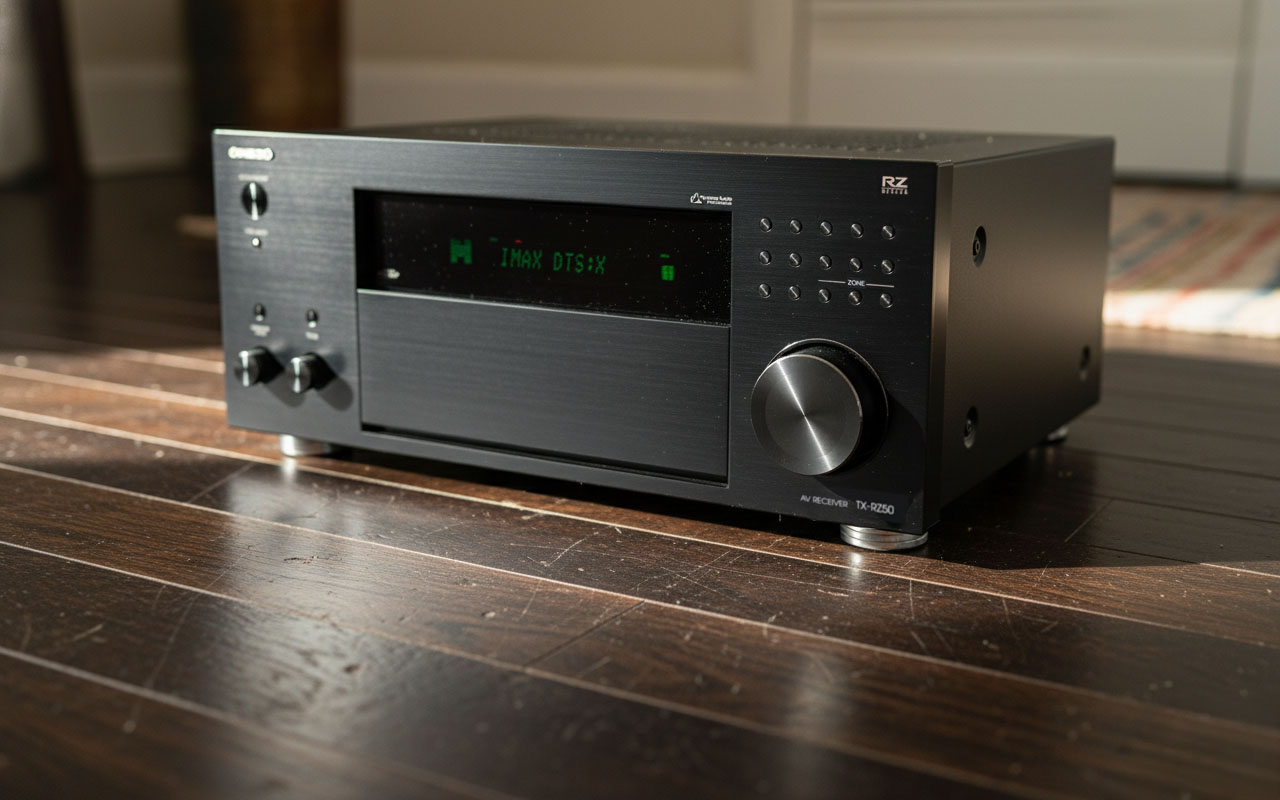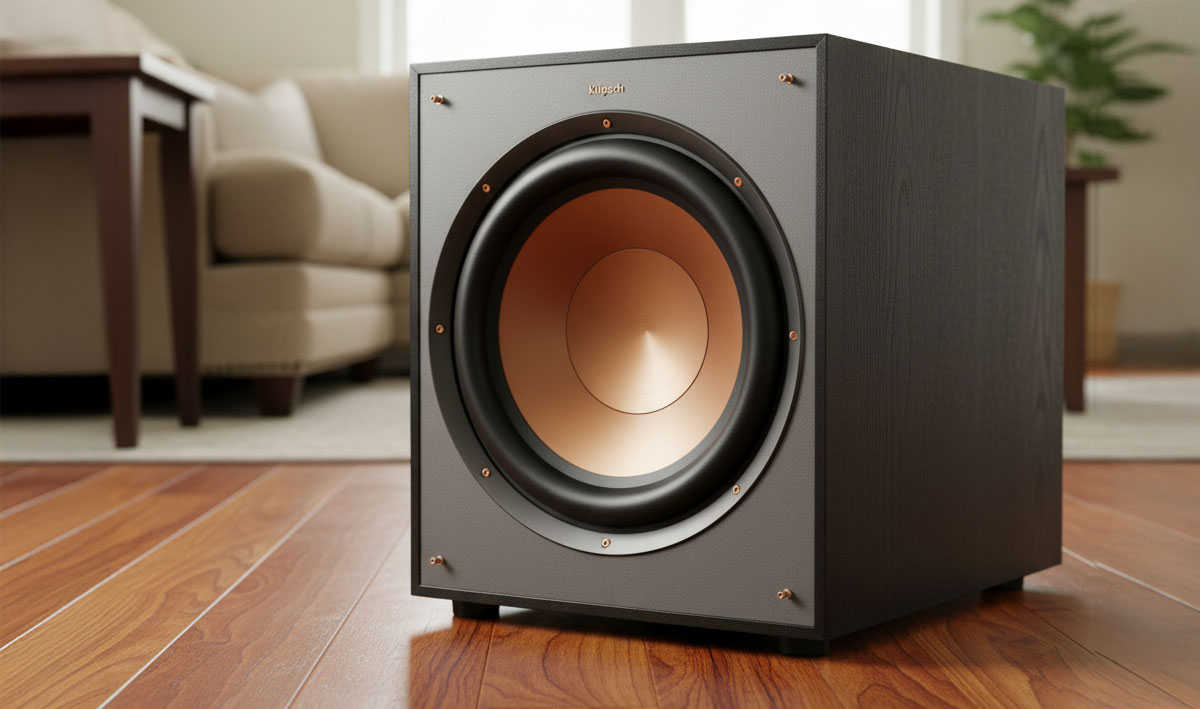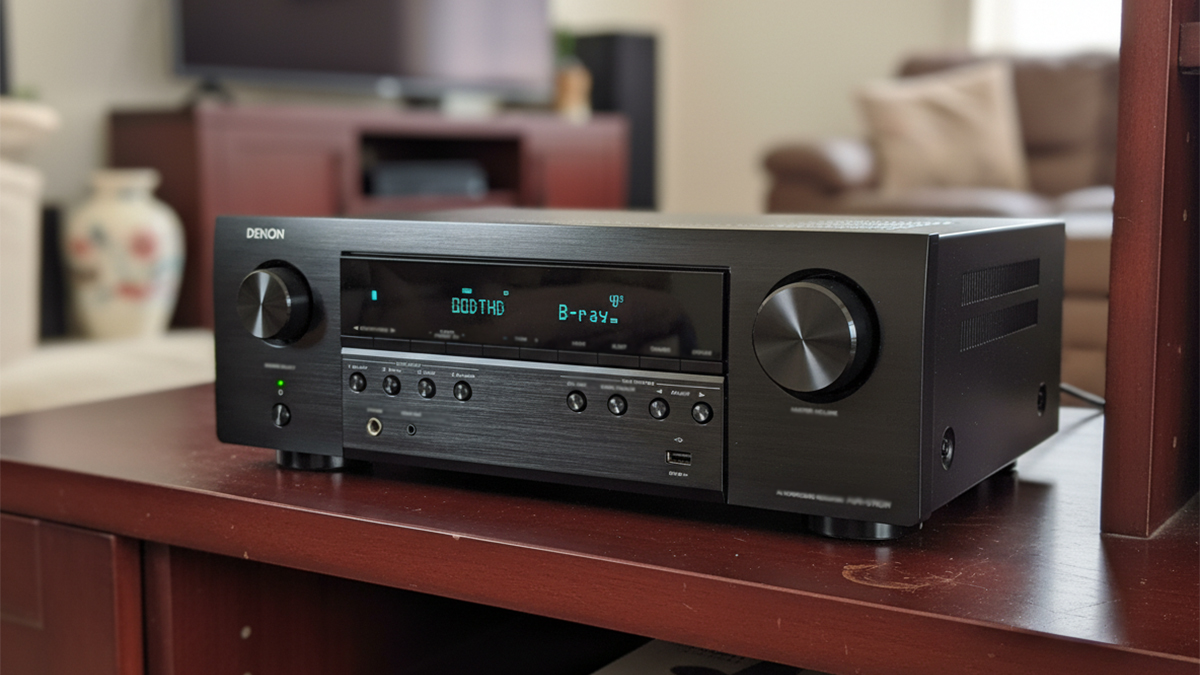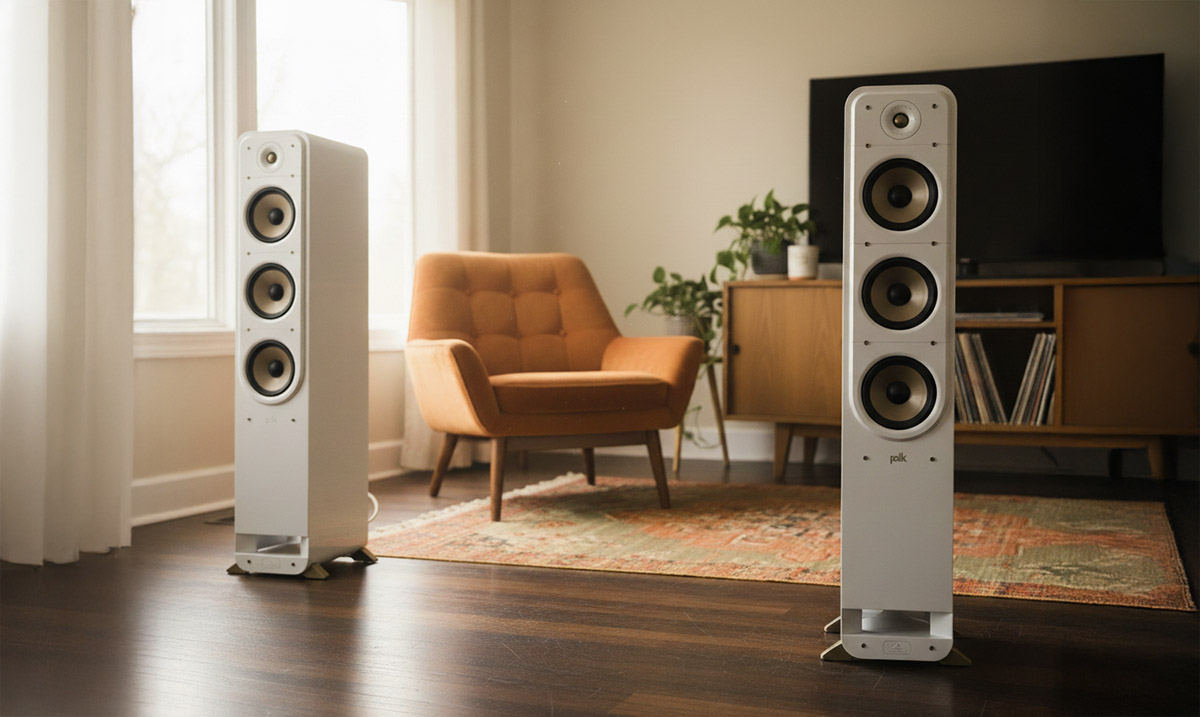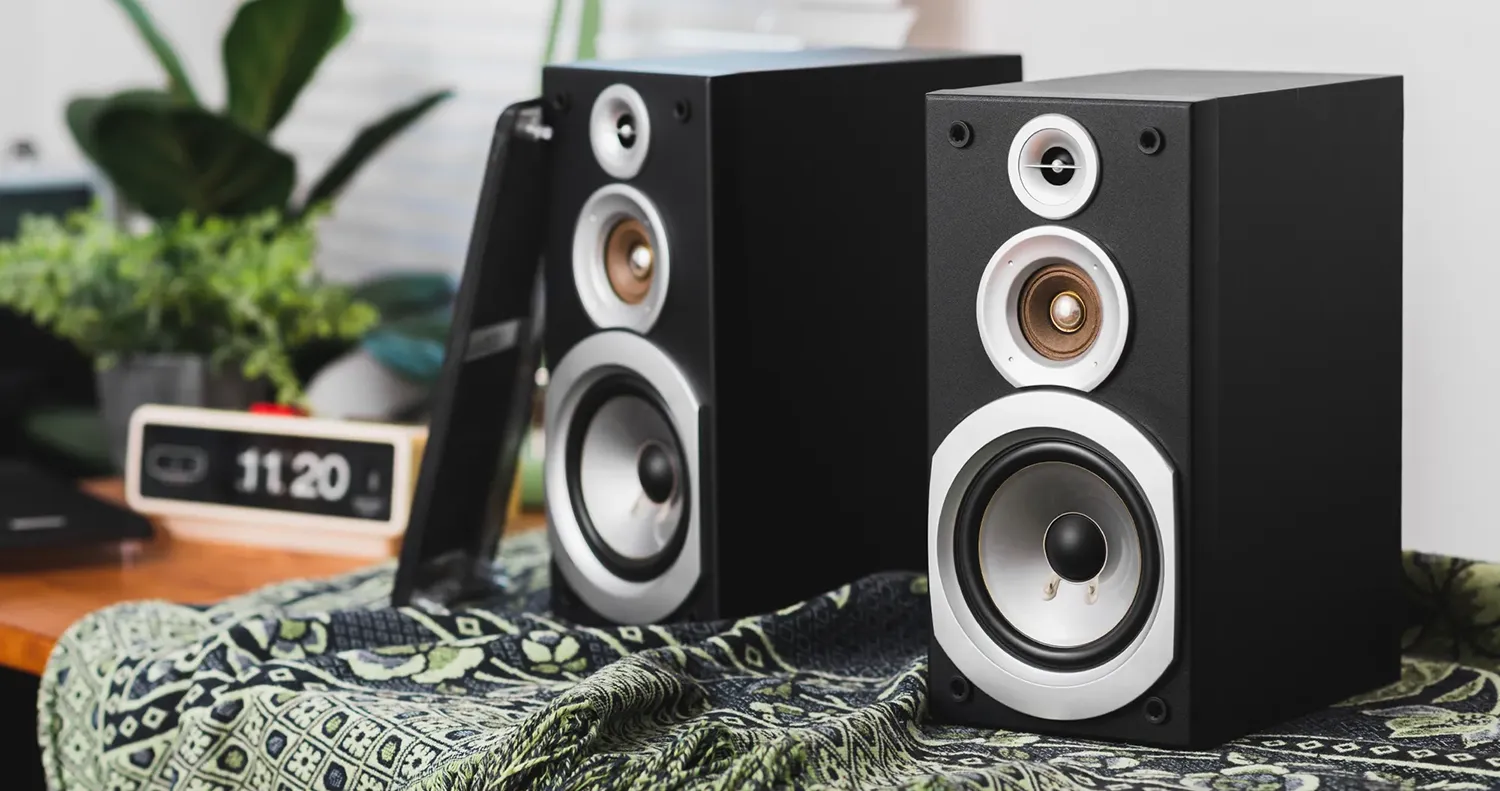Why Your New Turntable Is Silent
You lowered the needle, the platter spun, and the room stayed quiet. That is normal. A turntable does not feed speakers directly. It needs help to boost and shape the tiny cartridge signal, then amplify it to move air. The signal chain is simple once you see it, and you can build it a few different ways to fit your room and budget.
The Signal Chain In Plain English
- A Cartridge
turns groove motion into a very small voltage. Records are cut with reduced bass and boosted treble to fit more music on the side. - A Phono Preamp
reverses that curve using the RIAA standard and raises the tiny signal to line level.
An amplifier takes line level and adds the muscle that drives speakers. - Speakers
convert the electrical signal back into sound. If you prefer fewer boxes, powered speakers put the power amp inside the speaker. Many turntables also include a switchable phono preamp inside the plinth.
Clear Definitions
- A phono preamp takes a very small cartridge signal, usually a few millivolts, and turns it into normal line level, roughly about one volt, while restoring bass and trimming treble with the RIAA curve.
- A power amp takes that line level signal and provides current and voltage to drive speakers.
- An integrated amp combines a line level preamp and a power amp in one box, often with a phono input built in.
- A stereo receiver is an integrated amp plus a radio tuner and often more inputs.
- Powered speakers have the power amp built into the speaker cabinet, so they accept line level directly.
Four Easy Hookup Recipes
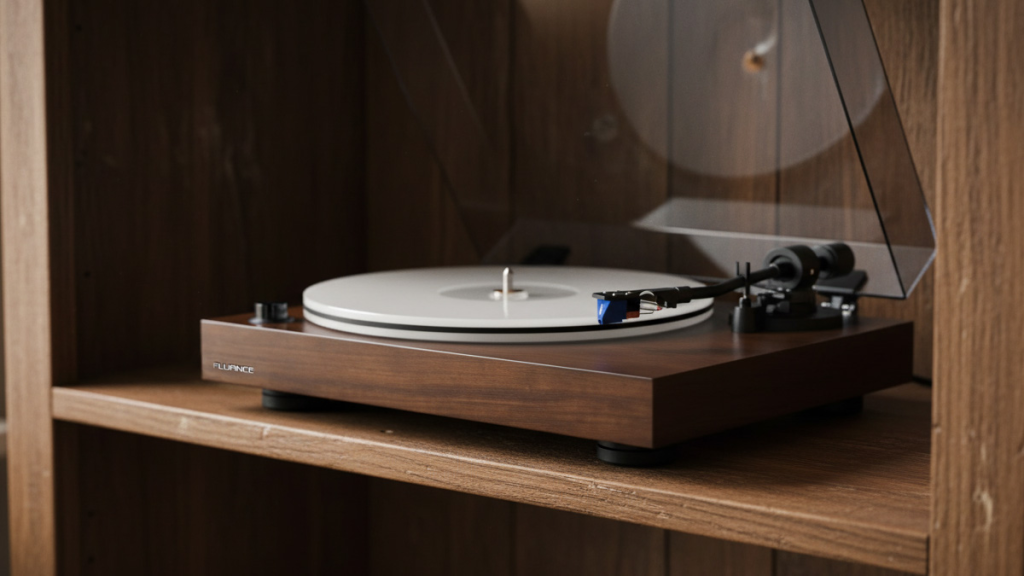
Turntable With Built In Phono To Powered Speakers
Flip the turntable switch from phono to line. Run RCA cables to powered speakers. Play records and control volume on the speakers. Good pairings include Audio Technica AT LP120XUSB or Fluance RT85 with Edifier R1280T, Audioengine A5 Plus, or Klipsch The Fives. This route is compact, friendly for apartments, and quick to set up.
Turntable Without Phono To External Phono Preamp To Powered Speakers
Add a small phono stage for lower noise and better gain options. ART DJPre II, Schiit Mani 2, Cambridge Audio Alva Solo, and iFi Zen Phono are popular and simple. Decks like Pro Ject Debut Carbon EVO or U Turn Orbit shine here. You keep the system small while leaving the door open for upgrades later.
Turntable To Integrated Amplifier Or Stereo Receiver With Phono, Then Passive Speakers
The classic stereo path. Plug into the phono input on a Yamaha A S301 or Sony STR DH190, then wire passive speakers such as ELAC Debut 2.0 B6.2, Polk ES20, or Q Acoustics 3020i. You gain clean power, easy volume control, and room to expand. Add a sub when you are ready.
Turntable To AV Receiver, With Or Without External Phono, Then Passive Speakers
Use one system for TV, streaming, games, and vinyl. Choose an AV receiver with a phono input, or add an external phono stage if yours lacks one. A Denon AVR S670H handles the living room chores, while an external phono stage gives the turntable a proper front end.
Do You Really Need A Phono Preamp
Yes, in every case, though it can be built in. Many starter turntables include a switchable phono stage. That is perfect for powered speakers. External stages add control, lower noise, and support for more cartridge types. If your deck has a built in preamp, you can bypass it later and upgrade when the itch arrives.
Moving Magnet Versus Moving Coil
Most entry cartridges are moving magnet. They output a healthy signal and work with every phono stage listed above. Moving coil offers lower output and different loading needs. If you plan to explore moving coil later, pick a phono stage that supports both, or add a simple step up device when the time comes.
Powered Or Passive Speakers
Powered Speakers
Powered speakers keep the box count low and the wiring simple. Volume is on the speaker, inputs are close by, and Bluetooth is often included. Edifier R1280T is a desk and bedroom favorite for its compact size and clear speech. Audioengine A5 Plus fills a mid sized room with ease. Klipsch The Fives add an HDMI ARC input, so your TV remote controls volume without extra gear.
Passive Speakers
Passive speakers give you the most flexibility and the biggest upgrade path. You choose the amp that matches your room and taste. A Yamaha A S301 with ELAC B6.2 is an honest, musical pairing for small to mid rooms. Polk ES20 offers a warmer balance that flatters older pressings. Q Acoustics 3020i images beautifully when placed on sturdy stands.
Pros And Cons
Turntable With Built In Phono To Powered Speakers
Pros
Fastest path to sound, fewest boxes, easy to move, ideal for small spaces.
Cons
Fewer upgrade options, you are tied to the internal preamp unless you bypass it, the speaker handles all volume and input duties.
Turntable To External Phono To Powered Speakers
Pros
Lower noise potential, adjustable gain, simple piece by piece upgrades, still compact.
Cons
One more box and power plug, a few more cables to route neatly.
Turntable To Integrated Amp Or Stereo Receiver To Passive Speakers
Pros
Best long term flexibility, more power and inputs, straightforward upgrades, easy to add a sub.
Cons
More boxes, more shelf space, slightly higher initial cost.
Turntable To AV Receiver To Passive Speakers
Pros
One system for everything, single remote convenience, room correction to tame bass.
Cons
Phono sections in theater receivers can be basic, an external phono stage often lifts the sound.
Specific Gear People Keep Praising
Turntables
Audio Technica AT LP120XUSB for direct drive stability and a switchable phono stage.
Fluance RT85 for a quiet belt drive with an acrylic platter and a respected cartridge.
Pro Ject Debut Carbon EVO for steady speed control and a rigid carbon arm that grows with you.
Phono Preamps
ART DJPre II for tiny size and adjustable gain on a budget.
Schiit Mani 2 for low noise and flexible loading with both MM and many MC cartridges.
Cambridge Audio Alva Solo for a smooth MM stage you can set and forget.
iFi Zen Phono for clean gain options and a helpful subsonic filter.
Integrated Amps And Receivers
Yamaha A S301 with honest power, a sub output, and a capable phono input.
Sony STR DH190 as a budget friendly stereo receiver with Bluetooth and phono.
Denon AVR S670H as a modern hub for TV and streaming, paired with an external phono stage for best vinyl results.
Speakers
Powered picks include Edifier R1280T, Audioengine A5 Plus, and Klipsch The Fives.
Passive picks include ELAC Debut 2.0 B6.2, Polk ES20, and Q Acoustics 3020i.
Hum, Grounding, And Cable Sanity
If you hear hum, attach the thin ground wire from the turntable to the ground screw on your phono preamp or amplifier. Keep the deck away from power bricks. Route signal cables away from wall warts and power strips. If your turntable has a built in preamp and hum persists, try bypassing it and using an external stage.
Setup Steps That Pay Off
Place the turntable on a stable, level surface. Set tracking force to the number recommended for your cartridge. Use the simple gauge to confirm overhang if your deck allows it. Plug the turntable and the phono stage into the same power strip to reduce ground loops. After you make sound, nudge speaker position a few inches at a time. Small moves in distance from the wall and toe in can turn nice into special.
Do You Need A Subwoofer With Bookshelves
Not required, often helpful. Most bookshelves roll off around the mid 50s. A compact sealed 10 or 12 inch sub near the front wall midpoint fills the last octave and lets your speakers relax. If your amp has a sub output, start the crossover around 80 hertz and fine tune over a week of listening.
A Simple Decision Guide
- Want sound today with minimal fuss. Choose a turntable with a built in phono stage and a pair of powered speakers.
- Want to learn and upgrade slowly. Choose a deck without a preamp, add a small external phono stage, and run an integrated amp with passive speakers.
- Live around a TV hub. Slot the turntable into your AV receiver and consider an external phono stage for polish.
Bottom Line
A turntable needs three jobs covered to make music. Phono equalization and gain, power amplification, and speakers. Those roles can live in one box or three, depending on how simple you want daily life to be. Match the path to your room, your patience for setup, and your long term plans. Keep cables tidy, ground the deck, and make changes in small steps. Do that and your records will go from quiet circles to living, breathing performances.
Teksignal.com participates in the Amazon Services LLC Associates Program, an affiliate advertising program designed to provide a means for sites to earn advertising fees by advertising and linking to Amazon.com

